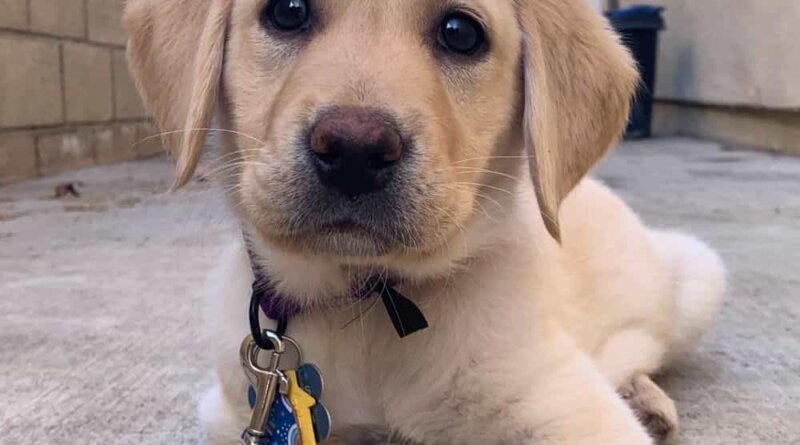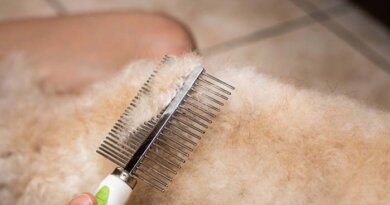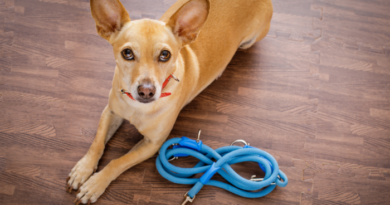10 Best Large Breed Dogs for Families
This post may contain affiliate links. We may earn money or products from the companies mentioned in this post.
If you’re thinking about getting a large-breed dog, there are many great breeds to choose from.
Many are gentle, friendly, cuddly companions that can complete your family. So, what are you waiting for?
Today I put together a list of 10 best large breed dogs for families and their attributes to help you decide on which canine is right for you.
Considerations When Deciding on the Right Dog for Your Family
In choosing which dog will fit in best with your family, consider the following:
Do you have children? How old are they?
Some large-breed dogs are great with children. They are “gentle giants.” But, due to their size, they may inadvertently injure toddlers and very young children.
High energy large breed dogs might be okay for the older kids but to rambunctious for the little ones.
Will you supervise interactions with children?
Of course this is important with any dog, but, because of their imposing size, a larger breed can harm a child without meaning to.
Some large breeds are more tolerant than others of rough-housing. But no young child should be left alone with a dog. And children should be taught to respect dogs as living beings.
Are you active?
Some big dogs have energy to spare whereas others can settle down more easily and be couch potatoes if their needs are met.
Can you meet the dog’s physical and mental exercise needs?
Some large-breed dogs still are bred to be working dogs. And they need a lot of physical and mental exercise and enrichment.
How much room do you have inside?
Some large-breed dogs don’t require a lot of space whereas others need to “stretch their legs” even inside.
How much room do you have in your vehicle? Can your vehicle safely transport a large-breed dog?
After all, there will be vet visits and other places to go, such as pet shops to socialize your new pup.
Do you have a fenced yard?
Some large-breed dogs need to run off some steam to get enough exercise.
If you don’t have a fenced yard yourself, you may have other access to a contained area, such as a friend’s fenced yard, that meets the dog’s needs.
How much grooming are you ready to do?
Consider the dog’s grooming requirements. Some large-breed dogs need more grooming to be healthy and look their best.
And some will need professional grooming and clipping if you aren’t able to do it yourself. Others can just have a quick regular brushing.
Are you willing to train the dog?
Of course all dogs should have at least basic training. But, with a large breed, they can be dangerous and a liability if not given more than basic manners training.
After all, they can knock people over and be a one-dog wrecking crew if not given guidance regarding what’s expected of them.
Are you willing to socialize the dog?
Just like training, all dogs should be well-socialized to what they’ll face in everyday life.
But if a chihuahua isn’t, he probably won’t be able to knock anyone over or pull his pet parent down.
Of course, it’s another story when you have a 120-pound friendly Newfoundland who is determined to greet everyone within range.
Do your family members prefer large, small, or medium-sized dogs?
I believe that it’s important to get everyone’s opinion who will be living with your new canine family member. Some of us–myself included–love all dogs.
But some people prefer smaller ones and may even be somewhat afraid of larger dogs. And yet other people love cuddling with the large, furry, teddy-bear-type larger breeds.
Are you willing to face the clean-up involved?
This can mean cleaning up the shedding hair that larger breeds can present throughout your household, with tumble-weed clusters.
But it also includes cleaning up any waste. After all, large breeds generally eat more than their smaller cousins. And what goes in must come out.
Are you ready for the higher costs?
Larger breeds mean you need more food and treats, larger crates and beds, and more expensive prescriptions of heartworm and other medicines than you would with smaller breeds.
Do you want a puppy or a more mature dog?
If getting a puppy, make sure that you go to a conscientious breeder who does the appropriate health tests on breeding stock and does appropriate activities with their dogs.
Avoid puppy mills, which breed dogs for profit, rather than for the health and welfare of the dog.
If looking for a young adult or beyond, there are many breed rescues who can help you find the right dog.
So now that you’ve considered whether a large-breed dog is best for your family, let’s look at some great contenders for your affection.
10 Best Large Breed Dogs For Families
1. Labrador Retrievers
Of course, labs should be on every list when considering whether to get a large-breed dog. There’s a reason that they’ve been one of the most popular breeds for decades.
They were bred to hunt and, if you get one from hunting lines he will probably require more physical and mental exercise than one from show lines.
But let me be clear: any healthy lab is energetic and needs both physical exercise and mental stimulation.
Physical exercise can be accomplished by long walks, hikes, swimming, agility, or fetching.
As intelligent dogs, they also need mental stimulation through training, games, and even puzzle and enrichment toys.
A bored, under-exercised labrador will inevitably be a destructive one.
Labs are friendly and never met a stranger. They love everyone and are good with other dogs. They’re playful and even-tempered.
Even though they have a short coat, it sheds. A lot. Bi-weekly brushing will help remove dead hair. And they’ll require baths as needed.
They can be great with children when their needs are met. And well-bred, socialized, and trained labs usually love to be petted and even cuddled.
Generally quiet dogs, they bark only when necessary.
Males stand between 22.5 and 24.5 inches at the shoulder and weigh between 65 and 80 pounds; females stand between 21.5 and 23.5 inches at the shoulder and weigh between 55 and 70 pounds.
They have an expected lifespan between 11 and 13 years.
2. Golden Retrievers
Goldens Retrievers are also usually on everyone’s list of great family dogs. They are sweet, intelligent, loving dogs who are friendly with everyone.
I’ve had three–all rescues. My golden Spencer was a therapy dog who comforted hospital patients on a weekly basis.
He loved to be petted and would even rest his head on someone’s lap or nudge them to assure that he would receive such attention.
Spencer intuitively knew who needed to be comforted. Patients and hospital staff enjoyed Spencer and his antics.
He performed tricks to entertain as well as providing an emotional refuge for all who came in contact with him.
Goldens are active dogs who need a job. After all, they were bred as working, hunting dogs.
So long walks, retrieving, swimming, and other activities with the family will help expend his almost limitless energy.
They are very trainable and trusting and, even though they may tolerate some rough handling, are not likely to snap.
But, as is true with any dog, he should be handled gently, even by young children.
Their longer coat requires regular grooming, with twice weekly brushing. Daily brushing during twice-yearly shedding seasons. And they can have a “doggy odor.”
And goldens shed, so regular cleaning is necessary to remove hair from all they come in contact with. They are not barkers, barking only when needed.
Males stand between 23 and 24 inches at the shoulder and weigh between 65 and 75 pounds.
Females stand between 21.5 and 22.5 inches at the shoulder and weigh between 55 and 65 pounds.
They have a life expectancy of 10 to 12 years.
3. Newfoundlands
Despite their enormous size, Newfoundlands (or “Newfies” as they’re affectionately known) are known to be gentle giants in the dog world.
Originally bred as working dogs for fisherman, they have also been used in water rescue of people.
Newfoundlands have a soft, gentle, patient nature and are docile with people and other dogs.
And they are devoted to their families and their sweet temperament is stated in the AKC breed standard to be the most important characteristic of the breed.
Newfies have even been called the “nanny dog” for children because of their patient, watchful nature.
Even though they can be great with children, you still need to be watchful. They don’t realize their own size–especially as puppies and young adults–and, in their friendly exuberance, can easily knock children over.
Affectionate with their family, newfies are friendly with other people and dogs.
They do shed but are quiet dogs who bark only when necessary.
They require exercise, but not as much as some other working breeds.
Some long walks and long romps in the yard will provide for their needs. They enjoy outdoor activities, including swimming and hiking.
Newfies are eager to please and very trainable when taught with positive reinforcement.
Brushing a few times a week should keep their coat tidy. They are droolers, so get a hand towel ready.
Males stand up to 28 inches at the shoulder and weigh between 130 and 150 pounds; females stand up to 26 inches and weigh between 100 and 120 pounds.
They have an expected lifespan of between nine and 10 years.
4. Boxers
Because of their patient and protective nature, boxers have a reputation of being great with children.
Bred as hunting dogs, they have also been used in military work.
They are bright, alert, athletic, intelligent dogs who are very energetic and require a lot of physical and mental stimulation to be the best companion that they can be.
Training should be consistent but boxers will become bored with overly repetitive training sessions.
In addition to on-leash exercise, they should also have access to run off-leash in a fenced-in area to run off excess energy.
Their short coat requires quick brushing with a rubber curry brush. A couple of times a week should be sufficient.
Generally clean dogs and not big shedders, they need only occasional baths.
Fearless dogs, boxers are protective and take their role as a guardian of the family seriously.
So they require extensive socialization from puppyhood on to temper any protectiveness and to ensure that they will get along with other dogs, especially those of the same sex, because they are not always tolerant of dogs of the same sex.
Boxers are bright, affectionate, playful dogs who have been described as being “silly” with those who they know well.
Because of their bounciness, especially when young, they may not be a great choice for very young children or frail adults.
Males stand between 23 and 25 inches at the shoulder and weigh between 65 and 80 pounds; females stand between 21.5 and 23.5 inches at the shoulder and weigh about 15 pounds less than males do.
They have a 10-to-12 year life expectancy.
5. Standard Poodles
Many people are familiar with toy and miniature poodles, but, if you’re looking for a large dog, the standard poodle may fit the bill.
Don’t be fooled by show cuts (the Continental with puffs of hair on their legs and body with the rest shorn to the skin) that may make the dog appear to be fragile.
Standard poodles were originally bred for waterfowl hunting and still are used to hunt.
They are sturdy, extremely intelligent companions who are affectionate with their families and good with children.
They learn easily and, to be their best, should be taught as much as possible–basic and advanced commands, tricks, and they excel at canine sports.
Standard poodles would be bored with just learning two or three commands.
And, in addition to challenging their Einstein-like mind, they require regular, intense physical exercise.
Very athletic with a square, muscular build and great swimmers, a poodle can be a welcome companion to a very active family.
Standard poodles are adaptable and playful. They’re friendly with everyone–people and dogs alike.
And, if you’re looking for a dog that doesn’t shed much, a poodle can be for you. But they still need to be groomed and, if you can’t clip them yourself, professional grooming is a must.
An all-over body clip is often chosen for pet poodles.
They are good watchdogs and will bark when needed.
Standard poodles stand over 15 inches at the shoulder. Females weigh between 40 and 50 pounds; males between 60 and 70 pounds.
They have a life expectancy of 10 to18 years.
6. Irish Setters
Majestic, stunning dogs, and sweet-natured, Irish setters are highly active dogs who do great with children and other dogs.
They are known for their flowing, flashy coat and athletic, lean build.
Friendly and outgoing, Irish setters will make friends wherever they go.
Sensitive and sweet, they can make great therapy dogs.
They love to fetch and can be great playmates for kids. As playful, energetic dogs, they need daily exercise and room to run.
Because they were bred as athletic hunting, sporting dogs, they excel in canine sports such as hunting, agility, dock diving, rally, tracking, and flyball.
Irish setters respond well to activities in which they participate with their family.
They respond well to training and are eager students when trained using positive reinforcement.
Keep the sessions fun or they will become bored. They don’t do well with repetitive drills.
They make great companions for the right, active family.
A friend of mine had three Irish setters at a time. They participated in agility and competitive obedience, which met the dogs’ need for physical exercise and mental stimulation. They were then friendly, calm companions.
Seasonal shedders, they require twice weekly brushing.
They will bark only when necessary.
Males stand at 27 inches at the shoulder and 70 pounds, females at 60 pounds and 25 inches at the shoulder.
Irish setters have a lifespan of 12 to 15 years.
7. Great Danes
Don’t be fooled by their imposing stature, Great Danes are known to be gentle, dependable companions who are friendly and, with supervision, can be companions for children.
Known as the “Apollo of Dogs,” they are a responsibility to own because of their pure strength.
Standing on their hind legs, most Danes are taller than most people.
These gentle giants have a sweet, playful nature. And they’re patient and affectionate and good with children.
But they can tell friend from foe and will courageously protect loved ones. They bark to alert their people of intruders.
After puppyhood, they don’t require a lot of exercise compared to some other large breeds. A few brisk, long walks and some playful romping should be enough to meet their needs.
Training should be firm, consistent, and use positive reinforcement.
Great Danes can be used as balance or mobility service dogs. In fact one organization, Service Dog Project specializes in breeding, training, and donating Great Danes as service dogs.
Their short, smooth coat doesn’t shed much. Weekly brushing should be sufficient, except during shedding season when daily brushing is recommended.
They are droolers, so keep a towel handy.
Males stand at 30-32 inches at the shoulder and are 140 to 175 pounds; females stand at 28-30 inches at the shoulder and 110 to 140 pounds.
They have an expected lifespan of seven to 10 years.
8. German Shepherds
Intelligent, loyal, courageous, and hard-working, German shepherds can make great family dogs.
They are very affectionate with and devoted to their families and can be great with children.
As a herding breed, they may attempt to round-up the children so that they don’t wander off. They have also been used as police and search-and-rescue dogs.
In fact, one of my friends does search-and-rescue with her dogs. They have been called as a team to find missing individuals.
Another friend does competitive obedience with his German shepherd.
Without participating in such activities, the dogs would be bored and potentially destructive.
Confident and courageous, they will protect their family.
They are somewhat aloof to newcomers. But, when properly bred, socialized, and trained, will be friendly to those welcomed by the family.
German shepherds are adaptable to changes in your schedule and other variations of everyday life.
They are a high-energy breed that requires a lot of daily mental and physical exercise so that they won’t become bored and destructive.
But they love to learn and should receive regular training.
They thrive when they are with their people engaging in activities.
Their double-coat does shed and they require regular grooming. They will bark and let you know if there are intruders.
Males stand between 30 and 32 inches at the shoulder and 140 and 175 pounds; females between 28 and 30 inches at the shoulder and 110 to 140 pounds.
9. Bernese Mountain Dogs
Despite their imposing size, Bernese mountain dogs (aka Berners) are calm and good-natured.
They are sweet, affectionate dogs who are particularly gentle with children. They need to be with their family and, if regularly left alone too long, can develop undesirable behaviors.
Even tempered, they maintain an aloof dignity with strangers.
Berners are year-round shedders who shed even more during twice-yearly shedding season.
Weekly brushing should maintain their long, double coat regularly and daily during shedding season.
They are droolers, so keep a towel handy.
Bernese mountain dogs require at least a half-hour of moderate exercise to remain healthy and happy.
And, if you love outdoor activities–even better. They make great walking or hiking partners.
Berners were originally farm dogs. They can excel in carting and drafting activities. So, if trained properly, they can even pull children in a cart!
They are sensitive dogs and respond well to positive reinforcement training. They want to please you and are easy to train.
Males stand between 25 and 27.5 inches at the shoulder and 80 and 115 pounds; females between 23 and 26 inches at the shoulder and 70 and 95 pounds.
Their life expectancy is seven to 10 years.
10. Greyhounds
If you’re looking for a larger dog who doesn’t require a ton of exercise, a greyhound may be the right dog for you.
They are sprinters, who run in short, intense bursts. Then, they can veg out with you while you’re watching TV. In fact, they’re often called the “fastest couch potatoes.”
So, in addition to some walks, they will need a fenced, secure area to run off some energy. As sight hounds, they will chase small animals and shouldn’t be trusted off-leash in open areas.
Inside, they are calm, gentle dogs.
They are naturally aloof with strangers. But, if socialized properly, they should be gentle with children and good with other dogs.
As a somewhat independent breed, Greyhounds need gentle, positive training–especially in a recall.
And, if you adopt a former racing greyhound, the “sit” command will be a challenge.
I’ve had numerous adopted greyhounds in my classes over the years. Some former racing greyhounds were not treated kindly if they sat when that behavior wasn’t desired.
But we captured and greatly rewarded the behavior because they wouldn’t lure into a sit. And then they learned quickly. They were very sweet dogs.
They train best in short, upbeat sessions so that they don’t become bored. Training should always be positive for this sensitive breed. They want to work with you, not for you.
Their short coat requires little grooming–weekly rubdowns with a damp cloth or hound glove–and baths as needed. They are not big shedders.
Males stand between 25 to 27.5 inches at the shoulder and weigh between 80 and 115 pounds.
Females stand between 23 and 26 inches at the shoulder and weigh between 70 and 95 pounds.
They have an estimated lifespan of 10 to 13 years.
FAQs
I’m thinking about getting a greyhound. Do they require a lot of exercise?
Not as much as you might think. A few walks and free-running in an enclosed, fenced area should suffice.
They are sprinters who need to run in short bursts of energy. But they can also be couch potatoes if their needs are met.
I love big dogs and am thinking about getting one. I want one who is friendly but will also protect my family if necessary. Would a boxer be a good fit?
Probably. Well-bred, socialized, and trained boxers are playful, friendly dogs. But they also can discern friend from foe and will bark to alert you to intruders.
You don’t want any pet dog to be aggressive, which can be like a loaded gun and dangerous.
I don’t want a dog who sheds a lot. But I want a larger dog who can participate in family activities. We love to swim and hike. What breed would be a good match?
Potentially a standard poodle. They love everyone and to be with their families. Natural swimmers, they are energetic and playful and would enjoy walks and hikes with the family.
And, although their fur needs professional grooming unless you know how to properly cut it yourself, they don’t shed much.
Final Thoughts
There are so many large breeds that would make great family dogs.
Consider whether you enjoy outdoor activities that some breeds need to thrive and how much grooming you are willing to do.
Large breeds are a large responsibility (pun intended) because they can potentially knock people over. But they are also great companions for the right family.
Do you have a large-breed dog? Or are you thinking about getting one?
Please tell us about it in the comments section below.
Save To Pinterest
Top Picks For Our Puppies
- BEST PUPPY TOY
We Like: Calmeroos Puppy Toy w/ Heartbeat and Heat Packs – Perfect for new puppies. Helps ease anxiety in their new home. - BEST DOG CHEW
We Like: Mighty Paw Naturals Bully Sticks – All of our puppies love to bite, nip, and chew. We love using Bully Sticks to help divert these unwanted behaviors. - BEST DOG TREATS
We Like: Crazy Dog Train-Me Treats – We use these as our high-value treats for our guide dog puppies. - BEST FRESH DOG FOOD
We Like: The Farmer’s Dog – A couple months ago we started feeding Raven fresh dog food and she loves it! Get 50% off your first order of The Farmer’s Dog.
Check out more of our favorites on our New Puppy Checklist.




